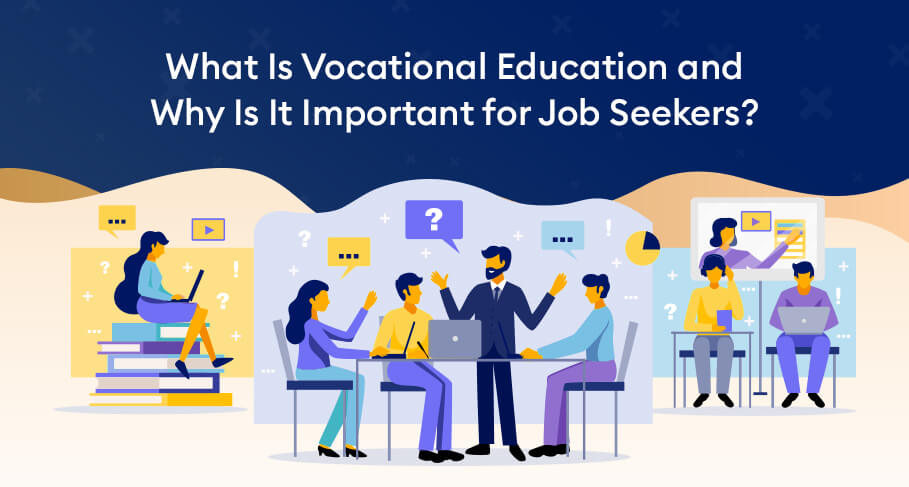When it comes to finding a job and excelling in any profession, the professionals must be skilled for the position and the occupation. The job world is changing quickly, and professionals who need to be more competent in this dynamic world can no longer excel in their career paths. This is where vocational education comes into play.
What is Vocational Education?
Vocational education and training allow individuals to gain practical knowledge, experience and skills in their chosen career before they graduate. Vocational education ensures students are “work ready” as they graduate. Usually, different vocational institutes offer vocational education for a variety of industries. However, with changes in education policies and addressing the need to bridge the skill gap, conventional education institutes have started to make it a part of their education programs. Vocational education can occur at post-secondary, further, and higher education levels. Slowly, it is becoming the new norm for working professionals to upskill through hands-on projects and online learning.
“Vocational education programs have made a real difference in the lives of countless young people nationwide. It builds self-confidence and leadership skills by allowing students to utilize their unique gifts and talents.” – Conrad Burns, Former United States Senator
Reasons why vocational education must be a part of higher education:
Make Students Employable: The core principle of vocational education is “learning by doing“. Employers are keen to hire a workforce that is “employable”. Students with practical knowledge of how things work and “what they have to do on the job” are the preferred candidates against those who are only theoretically aware of the procedures. Including training opportunities for students as part of education ensures that they have hands-on experience in the industry they are going to be a part of.
Preparing Students for the Global Stage: In the Internet age, the world is becoming connected and more globalized every year. The geographical barriers have been reduced drastically with enhanced connectivity and communication. Vocational education programs attract students from around the world. Students attend the courses and meet people from different cultures, ethnicity, and backgrounds. This helps students widen their perspectives, learn from new people and attain vital soft skills that will help them as much as the practical skills they will learn from the vocational education.
Career Clarity: As the saying goes, everything that shines isn’t glitter. Often students create an image of a particular profession which differs from how it is in reality. Since vocational education provides hands-on experience, students get to experience the job they will have in real life. This hands-on experience gives students the clarity to reflect on their choices, interests, and passion and find the best fit for themselves.
Here are a few videos that will help you better understand vocational education:
Vocational Education and Training
Using the example of the German dual education system, the video gives a clear picture of vocational training and how it can benefit students in today’s competitive world.
Why Choose Vocational Education?
The video features South & City College students in Birmingham who talk about why they have chosen vocational courses and what they anticipate from their qualifications. Watch this video to learn and understand students’ take on vocational education.
Vocational Education is an Option (A TED Talk by Nisha Choksi)
Talking about the purpose of education, Nisha Choski will take you through the real-life examples of people who never went to college but focused on learning to do and succeeded. She highlights how hands-on learning is a direct path to success and how vocational education can help.
Can Vocational High Schools Be a Viable Alternative to College?
The video will take you through how vocational education can be a better alternative to high schools that leave many students in the U.S. with no degree and debt. Watch the video to understand how vocational education institutes open up career opportunities for students and familiarize them with career options like carpentry, culinary arts, metal fabrication, and video production.
ESF JCSRS vocational programme opens the door of opportunity to special needs students
This video is an excellent example of how vocational education can help students with special needs. With hands-on training and skill development, students can work and be independent. The video demonstrates how the institution developed external placements with various local service providers and vocational opportunities within the school setting. The experience helped students get familiar with the job in real.
With the everchanging job world and continuous changes in skill demands, vocational education can help individuals learn beyond what pen and paper offer. Hands-on learning is at the core of vocational education, which helps people learn fundamental job skills. Addressing the changing pace of the industry and demand for skills, vocational education can change how we learn and train.


